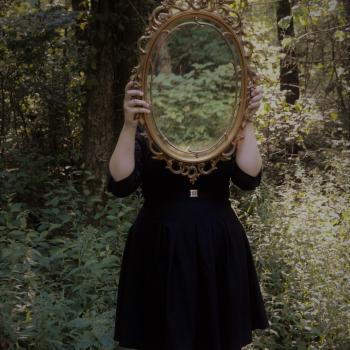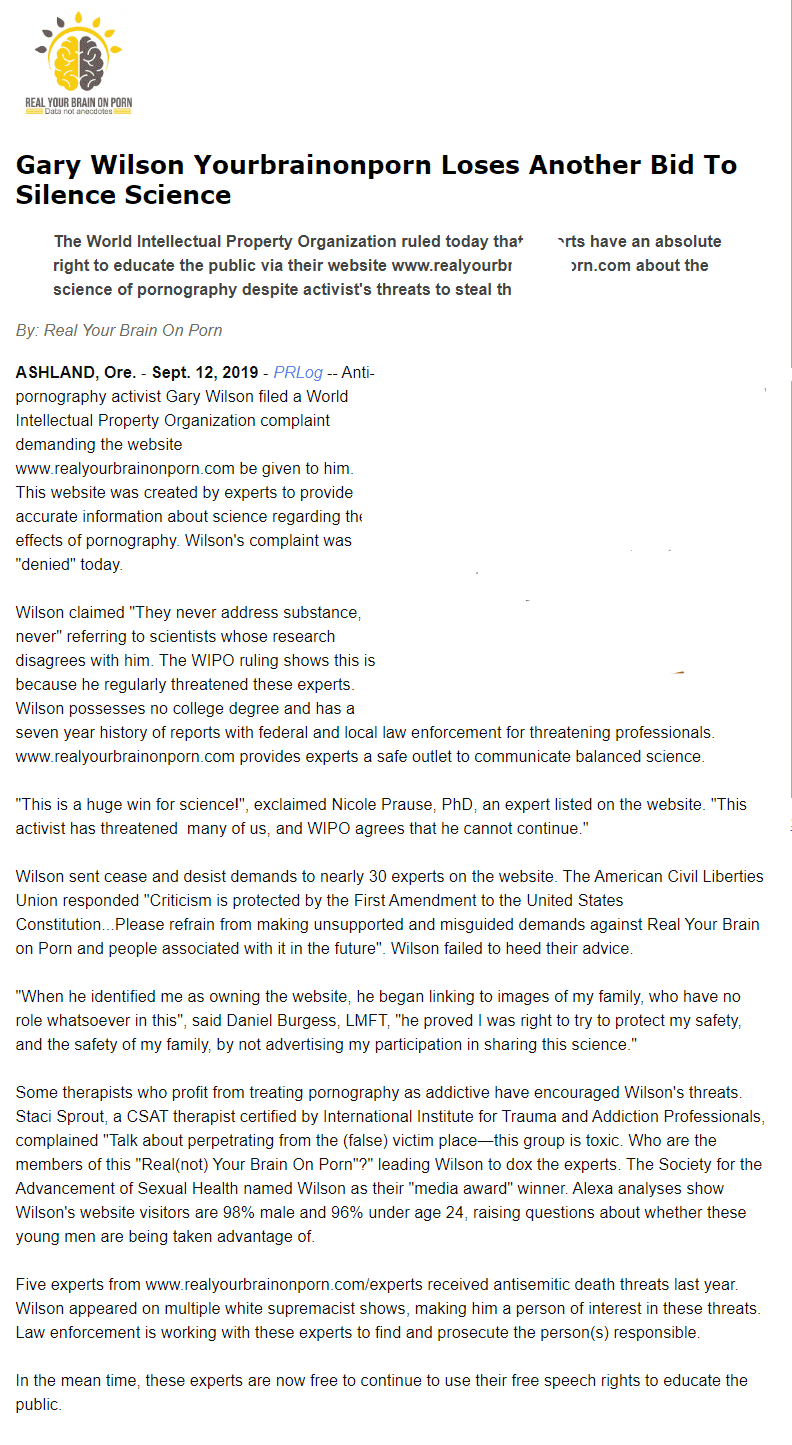In thinking more about my answer to this question, I want to make it very clear that by no means am I suggesting that we remove ourselves from the world and specifically our artistic cultures because of what can be deemed as the overwhelming use of pornographic images. Along with any culture that has the right to the freedoms we believe in (i.e. freedom of speech and expression), there will come both positive and negative choices. I believe the intent of the image has a lot to do with how we can make good choices. Take into account the following examples: the ballerina wearing a short tutu, a ballroom dancer wearing a salsa costume and moving in a sensual rhythm, the museum curator exhibiting tasteful art depicting the nude body, the author who at times includes literary sexual images (in other words, not the intent of the entire book), etc. All of these examples can bring about sexual awareness or even arousal. However, none of these examples include a marketing scheme or even an intent to get people to look at pornography or become addicted to pornography. Sexuality is a part of the human experience. And therefore, we are going to be confronted by different ways people incorporate and communicate about sexuality. There is no escape from this unless we choose to live in a closed-off bubble separate from the world we live in. And our leaders have specifically warned about this dynamic as well. When we live in a bubble, we do not prepare our children for the “real world”, we have less opportunities for missionary experiences, and we become hyper vigilant about issues we need to become more comfortable with (the power of the forbidden apple brings with it much enticement).
An unsuccessful example of trying to live in a “bubble” includes countries where fundamental religion covers its women from head to toe, brutally circumcises their females, and teaches their citizens to fear sexuality. All of these heightened attempts of taking the sex out of culture, in essence makes it more predominant. In reading Infidel by Ayaan Hirsi Ali I was reminded of how extreme positions, maybe meant to protect, in reality do the exact opposite. She states, “Excision of my genitals didn’t eliminate the human sex drive, and neither did the fear of hellfire. Repression only led to hypocrisy and lying, strategies that corrupt the human individual, and it failed to protect people from unwanted pregnancy and disease.” In fact countries that attempt the “sexual bubble” are usually lagging dramatically in the areas of women’s rights, economic welfare and corruption in general.
The scriptures themselves are an excellent example of a sacred work with adult content – from violence to sexuality. Yet we don’t go to an extreme and say we cannot read them. It is the extremes I always worry about. We need to become comfortable enough with our own sexual selves, so that one slight image or thought doesn’t send us running into the throes of inappropriate and uncontrollable thoughts or behavior. We do not want to become extreme censors, where we miss out on some of the best literature, art and culture the world has to offer.
I think a safe definition of pornography we need to stay away from are magazines, videos, websites, etc. that specifically depict naked pictures and/or sexual acts
- where the theme or “plot” is strictly focused on sex,
- where the sole purpose is to sexually arouse its viewer and,
- that serve the marketing purpose of getting men and women to buy or use more of this medium.
For example, psycho educational books that are meant to educate about sexuality and have anatomically correct pictures would not be deemed pornography by me.
A scary statistic I came across at this conference I recently went to regarding sexual addiction is that 77% of sexual addicts come from what are deemed “rigid” family structures. This is a family that has traits of overly authoritative leadership, is overly strict, there are limited negotiations, a sense of role rigidity or stereo-typed roles, there are rigid and strictly enforced rules and many of them. Please note that rules and leadership are important in any family structure. This is more than that. This is a family that does not allow for the concept of mercy. It is where adherence to rules are governed by fear (including both mortal and eternal punishment). My experience unfortunately with many of these types of families, is that erroneous or religious belief is at the foundation of this structure (just like with fundamental cultures and countries). When we can’t accept or talk about sexuality as part of the normal life cycle, it becomes a “forbidden” and “taboo” subject. It becomes more of a trigger than ever intended by the initial teachings. 87% of sex addicts came from families deemed as “disengaged.” Meaning there is pressure to be together in the family, but with an emotional distance present between family members even when together. This has a lot to do with fostering open and honest communication within the family structure. These numbers let me know that if we want to better able control pornography use, the possibility of sexual addiction, and/or other sexual acts we find immoral, we better be able to start a different kind of conversation within our family structures. One that includes structure but within the context of honesty, acceptance, love, mercy and openness. So much of what we educate our children and adolescents about has only to do with avoidance of sex: avoiding premarital sex, teen pregnancy and masturbation. What a limited view we are providing about the overall sex life cycle which includes normal sexual drives from birth to elderly adults to an eternal perspective on the matter.
If you have developed a sexual addiction, then you will have to be more conservative and strict than others – because your arousal template is more easily triggered than for most people. Like with everything, everyone needs to work out a balance of what is or is not appropriate that works for them individually and within the context of their beliefs, marriage, and family. And in the context of cultural media (not deemed pornography by my definition above), we need not judge others if what they deem appropriate is different than what we deem appropriate.
I will close with an excerpt from Infidel where Ayaan finds herself living in Europe. It speaks of the dynamic that we all find ourselves having to live among other humans, including their sexualities, and how we go about doing this. It also speaks of how her strict religious misconceptions have led to incorrect beliefs regarding men, women and sexuality in general. I hope that in our desires to protect ourselves and loved ones from issues like pornography, we also attempt to protect from rigid and incorrect sexual ideas that can lead to equal amounts of unhappiness.
“Why should I uncover my naked skin?” I asked Mina. “Don’t you have any shame? What are you hoping to achieve walking around undressed (by ‘undressed’ she means not fully covered in the traditional religious robes of her faith)? Don’t you know how it affects men?”
“I wear these skirts because I like having pretty legs,” said Mina. “They won’t be pretty for long, and I want to enjoy them.” She shook one at me and said, “If anyone else enjoys them, so much the better.”
I couldn’t believe it. I said, “This is precisely the opposite of what I have been brought up to believe.” And all of them, because all the girls had gathered around by now, chimed in, “But why? Why are all you Muslims so difficult?”
“But if men see women dressed like you are now, with your arms bare and everything naked, then they will become confused and sexually tempted,” I told them. “They will be blinded by desire.” (the erroneous concept that women are to be held accountable for men’s thoughts and actions)
The girls began laughing, and Mina said, “I don’t think it’s really like that. And you know, if they get tempted, that’s not such a big deal.”
By then I was wailing, because I could see what was coming, but I said, “But they won’t be able to work, and the buses will crash, and there will be a state of total fitna!”
“So why is there not a state of total chaos everywhere around us, here, in Europe?” Mina asked.
It was true. All I had to do was use my eyes. Europe worked perfectly, every bus and clock of it. Not the first tremor of chaos was detectable. “I don’t know,” I said helplessly. “It must be because these are not really men.”
“Oh? They are not really men, these big strong blond Dutch workers?” By this time the Ethiopian girls were almost weeping with laughter at the bumpkin that I was. They thought it was such Muslim bullshit. We Muslims were always boasting about something or other, but our whole culture was sexually frustrated. And who on earth did I think I was to personally wreak fitna on the world? They were friendly, because they knew it wasn’t my fault I felt this way, but they really let me have it.
I got up and put on my headscarf, and stood at the doorway of the bungalow. A group of Bosnian asylum seekers lived a little farther on, and they were talking in the sun. These women were supposed to be Muslim, but they were really almost naked, wearing short shorts and T-shirts with not even a bra, so you could see their nipples. Men worked nearby, or sat and talked to them quite normally, apparently not even noticing them. I stared at them for a long time, thinking, Could there be some truth to what the Ethiopian girls had said?
The next morning, I decided to stage an experiment. I would walk out of the door without a headscarf. I was in my long green skirt and long tunic, and I had my scarf in a bag with me in case of trouble, but I would not cover my hair. I planned to see what would happen. I was sweating. This was really haram, and also the first time I had walked in a public space with my hair uncovered since I was sixteen.
Absolutely nothing happened. The gardeners kept trimming the hedges. Nobody went into a fit. Still, these were Dutch people, so perhaps not really men. I walked past Ethiopians and Zaireans, and no one paid any attention to me; but then, these people were not Muslims either. So I walked over to the group of Bosnians. Nobody looked at me. If anything, I attracted less attention than when I was covering my head. Not one man went into a frenzy.”











